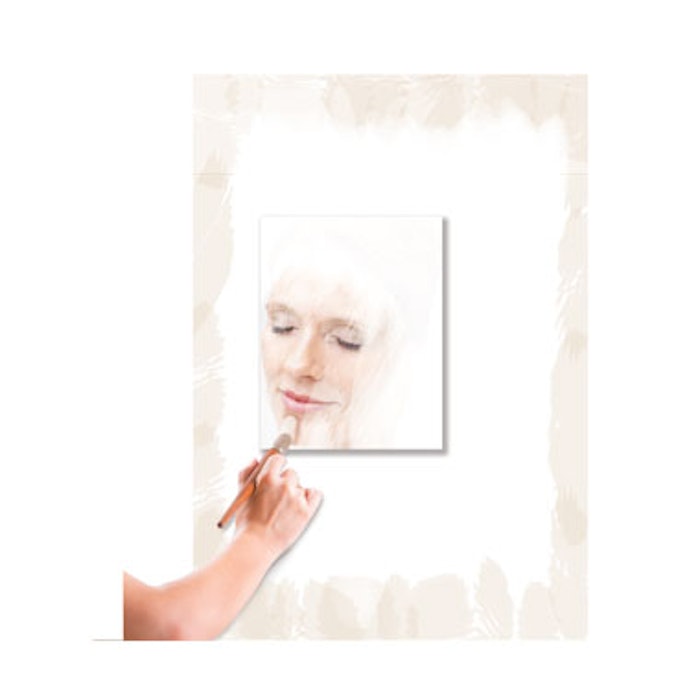
The value of pretreatment skincare protocols for ablative laser procedures has been debated for decades. In 1998, doctors at Massachusetts General Hospital Dermatology Laser Center published the results of a survey and literature review on the effect of pre- and postprocedure skincare protocols in laser skin resurfacing (Dermatologic Surgery, February). The two main reasons postulated for treating the skin before invasive procedures are faster healing and less risk of post-inflammatory hyperpigmentation (PIH). The researchers found widespread use among dermatologists and plastic surgeons—and evidence to support the use—of tretinoin prior to laser treatment, noting that in split-back pig studies skin that was pretreated with tretinoin 0.5% healed significantly faster than the half that received no pretreatment.
However, there was no clinical data available at that time to support or disprove pretreatment with skin lighteners, such as hydroquinone, to reduce the risk of PIH. Despite the lack of evidence, their survey revealed that many dermatologists and plastic surgeons were prescribing skin lighteners prior to ablative laser resurfacing.
Today, some cosmetic dermatologists, including Michael Gold, MD, founder of Gold Skin Care Center in Nashville, say it is always a good idea to have the skin prepped and primed for any cosmetic procedure, while others such as Tina Alster, MD, say they don’t prescribe anything special before ablative laser resurfacing.
Plastic surgeons including Elizabeth Morgan, MD, PhD, MPH, founder of Morgan Cosmetic Surgery, in Atlanta, suggest specific skincare treatments before cosmetic surgery for some but not all patients. James A. Heinrich, MD, founder of Coast Cosmetic & Laser Medical Center, Mission Viejo, California, and others do not prep the skin before facelifts or other facial surgery, but always prepare the skin before ablative laser resurfacing.
Faster Healing Times
Journal of Cutaneous Aesthetic Surgery) concluding that, although much of the evidence published is anecdotal, “a regimen of tretinoin before facial resurfacing expedites epidermal healing.”
“We prescribe a course of Retin A (tretinoin, Valeant), at least three weeks—but six weeks is optimal—before laser resurfacing, especially if we are using a CO2 laser,” says Dr. Heinrich. “We find patients heal more quickly with fewer problems. We have recently begun using Alastin, which has both a preprocedure kit and a postprocedure kit. We are getting good results with these kits, and none of our patients have experienced any sensitivity reactions to the products.”
Developed in 2015, Alastin (TriHex Technology) uses a proprietary blend of peptides to activate production of elastin and collagen. The results of a randomized, investigator-blinded study by Sabrina Fabi, MD, and Deanne Robinson, MD, presented at the 7th Annual Summit in Aesthetic Medicine in May 2017, showed faster healing times in patients who were pretreated with Alastin prior to fractional ablatve laser skin resurfacing.
“If you ask skincare company representatives, each will tell you their company has the best before-and-after skincare routines,” says Dr. Gold. “We need to make sure we rely on clinical scientific studies and real world experience. This is how we determine what works best.”
He emphasizes an individualistic approach to pretreatment in his practice, opting for retinoids in combination with concern-specific topicals. “There is no preferred routine that we use with every procedure. Instead, we customize based on what is needed to give us the best results,” says Dr. Gold. “If we are dealing with wrinkles, we want to use topicals with growth factors and antioxidants; if we are treating pigment, we want to add in a hydroquinone or one of the many great anti-pigment products without hydroquinone.”
Dr. Morgan prefers a six-week pretreatment kit based on tretinoin. “The most effective ingredients are tretinoin or related retinoids, glycolics (research shows that both tretinoin and glycolic acid work better when used together) and a skin lightener,” she says.
Based on their 2016 review of published studies, Drs. Buchanan and Gilman recommended a specific regimen for use before ablative laser resurfacing, consisting of “0.1% tretinoin cream applied nightly for three months prior to, and discontinuing 24 hours before, the planned procedure.”
They recommended that physicians start patients who are new to retinoids at lower concentrations or use slower-acting synthetic retinoids, such as adapalene or tazarotene, to minimize the risk of retinoid dermatitis.
When considering a pretreatment skincare program designed to speed healing and reduce the risk of complications, Dr.
Heinrich notes that physicians must also be aware of what patients are using on their own. Supplements and medications that increase the risk of bleeding and topicals that cause skin sensitivity can affect outcomes and increase the risk of complications. “This is extremely important because when patients have problems after laser treatments, it is often because of the products they are using or taking,” he says. “If we find out what they are using beforehand, we can head off some of these problems.”
Preventing PIH
PIH is one of the most common complications with ablative skin resurfacing. To help reduce the risk of PIH, patients should avoid unprotected sun exposure for up to two months before an ablative procedure. Laser clinics routinely schedule promotions for laser resurfacing in the fall and winter, noting fewer problems with hyperpigmentation when skin is less likely to be exposed to major doses of UV radiation both before and after the procedure.
PIH is especially risky in darker skin types. Many doctors are reluctant to use ablative lasers on skin types 4 and above. “Patients come in and they look like a type 3, but they are really a type 4 or 5,” says Dr. Heinrich, “and they end up looking worse after the treatment than before. Always do photography before the procedure because it is easy to forget what the skin looked like originally.
“If dark spots appear after laser treatments, we stop treatment and do a series of light chemical peels,” he continues. “We especially like ones that include hydroquinone as well as Retin A. We also use the PicoSure FOCUS (Cynosure) to treat hyperpigmentation. It breaks up the pigmentation and clears the skin.”
Dr. Morgan recommends topical lightening products prior to treatment for patients with darker skin types. “In my experience, a six-week, pretreatment course that includes twice-daily application of a hydroquinone, tretinoin and glycolic acid preparation greatly reduces hyperpigmentation of dark skin after a procedure,” she says. “For short-term application, I use 4% hydroquinone.”
Dr. Alster does not generally prescribe specific pre-treatment skincare regimens to reduce the risk of PIH before ablative laser treatments, “although many of my patients are already using topical antioxidants and sunscreen on a daily basis,” she says. “The reason I don’t prescribe anything in particular (except sunscreen) is because of a research study I published (West TB, Alster TS. “Effect of pretreatment on the incidence of hyperpigmentation following cutaneous CO2 laser resurfacing,” Dermatologic Surgery, January 1999).”
For the study, Dr. Alster and Dr. West randomized 100 CO2 laser resurfacing patients to undergo pretreatment with 10% glycolic acid cream twice daily (n=25), HQ 4% cream and tretinoin 0.025% cream twice daily (n=25) or no pretreatment (n=50). “We found that patients who used preoperative bleaching or retinoic acid preparations did not have a lower risk of developing post-laser ablation hyperpigmentation than those patients who did not use any topical pre-treatment,” says Dr. Alster.
In the study, Dr. Alster and Dr. West posit that topical pretreatment may be ineffective in preventing PIH because “reepithelialization after cutaneous laser resurfacing includes follicular melanocytes that have not been affected by topical pretreatment. Therefore the most effective strategy for preventing PIH is careful patient selection, after care and follow-up.”
“The most important factors in minimizing the risk of PIH after laser or other treatments are ensuring that skin has not received recent sun exposure; application of SPF (physical sunscreens recommended) and strict avoidance of sun exposure after treatment until all post-treatment erythema has resolved; application of skin lightening products (e.g. antioxidants, retinoic acid, non-hydroquinone faders such as kojic acid or arbutin) at the earliest sign of PIH; and use of a topical anti-inflammatory (hydrocortisone) to diminish skin erythema that extends beyond the first post-treatment week,” says Dr. Alster.
With a small, but growing body of literature on the use of pretreatment skin care in laser skin resurfacing, physicians do have some guidance available on how to deliver the best outcomes. But more—and larger—studies are needed to support or disprove the numerous topical ingredients promising to stimulate collagen, inhibit melanogenesis and support faster wound healing.
Linda W. Lewis is the contributing editor of MedEsthetics.
Image copyright Getty Images











